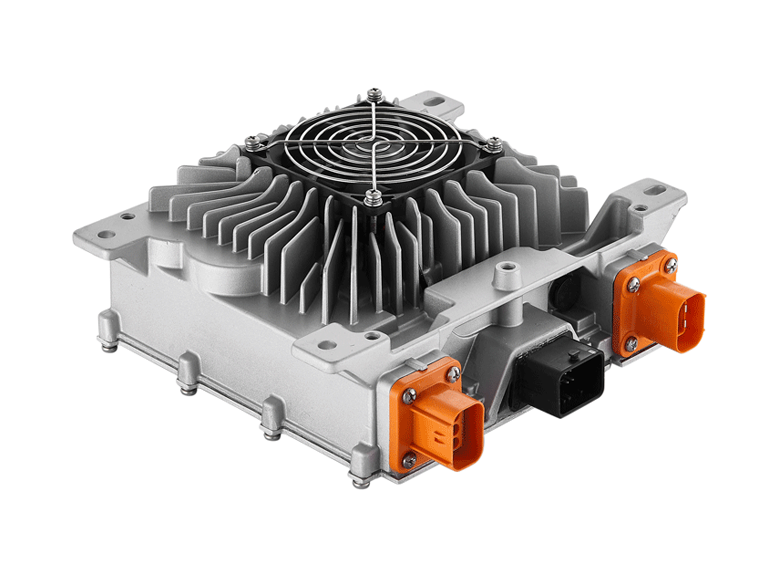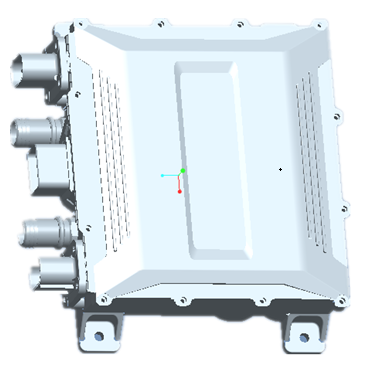The world of electric vehicles (EVs) is constantly evolving, with advancements in technology pushing the boundaries of what these vehicles can do. One such innovation is the bi-directional on-board charger, a game-changer in the realm of EVs. In this blog, we'll delve into the concept of bi-directional on-board chargers, their significance, and the potential they hold for the future of sustainable transportation.
Understanding Bi-Directional On-Board Charger
A bi-directional on-board charger, often abbreviated as BDC, is a sophisticated piece of technology that goes beyond its conventional counterpart. Traditional on-board chargers are designed to convert alternating current (AC) from the grid into direct current (DC) for the vehicle's battery, ensuring that it can be charged efficiently. However, a bi-directional on-board charger is designed to work in two directions: it can not only charge the vehicle's battery but also discharge it back into the grid or use it to power other devices, making it a two-way street for electrical energy.
The Significance of Bi-Directional On-Board Charger
Grid Stabilization and Resilience: One of the most significant advantages of bi-directional on-board chargers is their potential to support grid stability and resilience. When plugged in, an EV equipped with a BDC can act as a distributed energy resource. During periods of high energy demand or emergencies, the vehicle can discharge excess energy back into the grid, thereby alleviating stress on the power infrastructure.
Energy Storage: Bi-directional on-board chargers enable EVs to function as mobile energy storage systems. This means they can store excess energy when renewable resources like solar or wind are abundant and release it during peak demand, reducing the need for additional grid infrastructure and potentially saving
consumers money. Additionally, this feature can be particularly useful in regions prone to blackouts or in disaster recovery scenarios, as EVs can supply power to homes and critical facilities.

Load Balancing: With the ability to both charge and discharge power, bi-directional on-board chargers can help balance loads on the grid. They can draw power during off-peak hours when electricity is cheaper and release it during peak hours, reducing the strain on the grid during periods of high demand.
Vehicle-to-Home (V2H) and Vehicle-to-Grid (V2G): These are two key concepts made possible by bi-directional on-board chargers. V2H enables an EV to power a household during an outage, essentially turning it into a backup generator. V2G, on the other hand, allows EVs to feed electricity back into the grid, earning their owners money for the surplus power they provide.
Challenges and Considerations
While bi-directional on-board chargers hold great promise, there are some challenges and considerations to address:
Battery Degradation: Frequent charging and discharging may accelerate battery degradation, reducing the lifespan of the EV's battery. Manufacturers need to develop robust battery management systems to mitigate this issue.
Regulatory Hurdles: Widespread adoption of V2G and V2H technologies will require regulatory support and standardized protocols to ensure safe and efficient operation.

Power Quality and Compatibility: Bi-directional charging can introduce power quality issues, and compatibility with various grid systems and energy markets needs to be addressed.
Cybersecurity: With two-way communication, bi-directional on-board chargers could be vulnerable to cyberattacks. Robust cybersecurity measures must be in place to protect the grid and consumers.
The Future of Sustainable Transportation
Bi-directional on-board chargers have the potential to revolutionize the way we use and think about electric vehicles. They can help balance the grid, provide backup power during outages, and even generate revenue for EV owners. As technology continues to advance and EV adoption grows, we can expect to see more vehicles equipped with these versatile chargers.
In conclusion, bi-directional on-board chargers represent a significant step forward in the integration of electric vehicles into our daily lives. By unlocking the potential of these chargers, we can create a more resilient and sustainable energy ecosystem. As automakers, policymakers, and technology developers work together to overcome the challenges, the bi-directional on-board charger is poised to play a pivotal role in the future of sustainable transportation.
Next:Fast Wireless Car Charger - What You need to Know?
Previous:The Best 48V and 80V Forklift Charger Features
Contact Person: Miss. Kiki
| WhatsApp : | +8617763224709 |
|---|---|
| Skype : | +8617763224709 |
| WeChat : | +8617763224709 |
| Email : | kiki@lifepo4-battery.com |